In industries like construction, manufacturing, welding, mining, oil & gas, and even agricultural fields, workers are exposed to harsh environments and hazardous tasks daily. Whether it’s handling heavy machinery, working at heights, or operating in toxic conditions, safety should never be an afterthought—it must be the first priority.
This is where Personal Protective Equipment (PPE) plays a life-saving role. Let’s explore the essential safety gear used in field jobs and why each piece is crucial for protecting workers on the job.
👢 1. Safety Boots – Your First Line of Defense from the Ground Up
Field environments often involve rough terrain, falling objects, or chemical spills. Safety boots are built for these conditions.
- Protect from: Heavy object impact, punctures, electrical hazards, slippery surfaces
- Features: Steel or composite toe caps, anti-slip soles, puncture-resistant midsoles, waterproofing
- Importance: Prevents foot injuries, ankle twists, burns, and even electrocution in certain environments
Tip: Always ensure safety boots are certified to international standards like ASTM, EN ISO, or CSA.
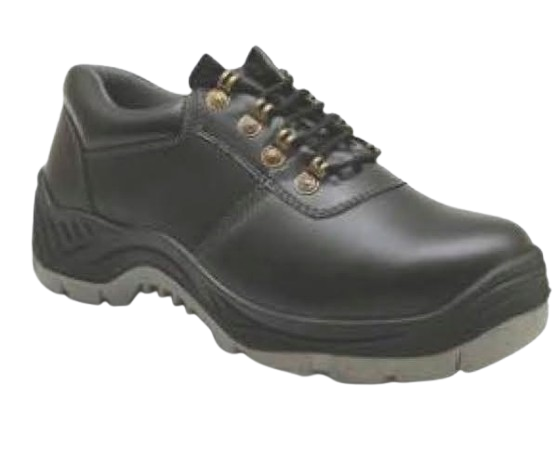
🧷 2. Safety Belts & Harnesses – Saving Lives at Heights
For workers operating at elevation—like on scaffolding, roofs, or towers—fall protection equipment is a must.
- Protect from: Falls, slips, sudden drops during lifting or climbing
- Types: Full-body harnesses, lanyards, safety belts with D-rings
- Importance: Prevents fatal injuries and keeps the worker secure in unstable or elevated positions
Tip: Check all belts and harnesses regularly for wear, tear, or frayed webbing.
🧤 3. Safety Gloves – Shielding the Hands That Do the Work
Hands are constantly exposed to sharp tools, hot surfaces, and chemicals on field jobs. Proper gloves help avoid cuts, burns, and abrasions.
- Protect from: Cuts, punctures, abrasions, vibrations, chemical burns
- Types:
- General-purpose gloves (for mechanical work)
- Cut-resistant gloves (for metal handling)
- Heat-resistant gloves (for thermal applications)
- Chemical-resistant gloves (for chemical handling)
Tip: Choose gloves based on task—no one-glove-fits-all in safety.
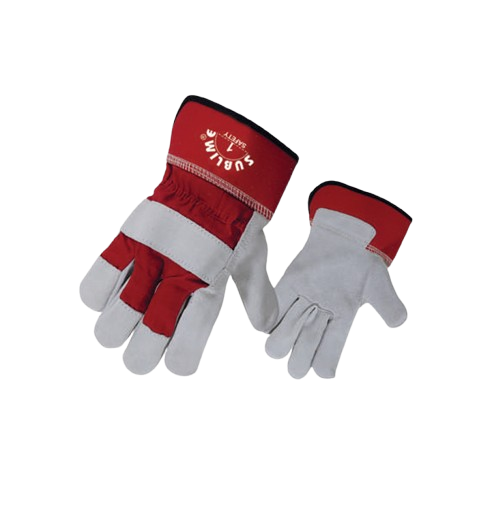
🔥 4. Safety Welding Gloves – Maximum Protection from Heat and Sparks
For welders, regular gloves won’t do. Welding gloves are specially made for extreme heat, sparks, and UV exposure.
- Protect from: Burns, electrical arcs, hot metal, UV radiation
- Features: Flame-resistant leather, long cuffs, heat insulation
- Importance: Prevents severe hand and wrist burns while allowing dexterity
Tip: MIG and TIG welding may require different glove types—know your welding method.
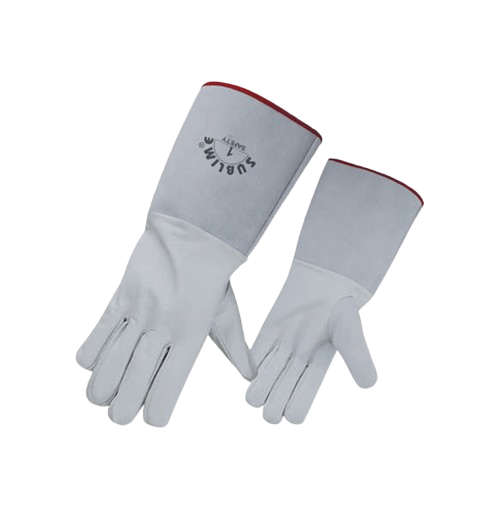
🧥 5. Safety Suits – Full-Body Protection for Hazardous Work
Safety suits provide complete coverage and vary depending on the industry and risks involved.
- Protect from: Chemicals, biohazards, flames, dust, heat, and arc flashes
- Types:
- Flame-retardant suits (FR suits for welders and electricians)
- Chemical splash suits (PVC or Tychem suits)
- Disposable coveralls (for painting, cleanup, or hazardous dust)
- Importance: Prevents skin burns, chemical exposure, and clothing entanglement
Tip: Ensure proper fit and sealed seams for full-body suits to be effective.
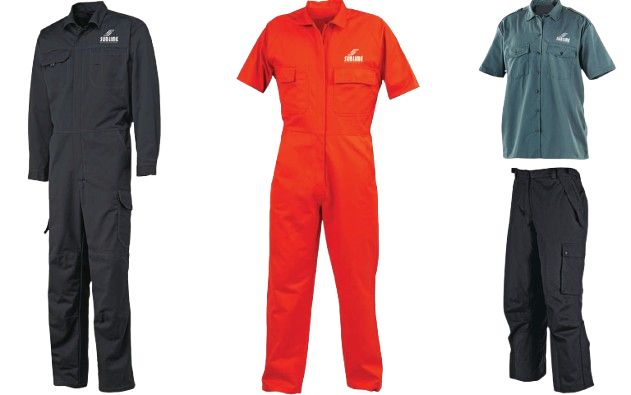
😷 6. Safety Gas Masks & Respirators – Breathing Safely in Toxic Zones
Airborne hazards are often invisible—but the damage they cause can be irreversible.
- Protect from: Toxic fumes, gases, dust, vapors, and oxygen-deficient environments
- Types:
- Half-face and full-face respirators
- Cartridge-based or filter masks
- SCBA (Self-Contained Breathing Apparatus) for extreme environments
- Importance: Prevents respiratory illnesses, poisoning, and long-term lung damage
Tip: Fit testing and cartridge selection are crucial for effective respiratory protection.
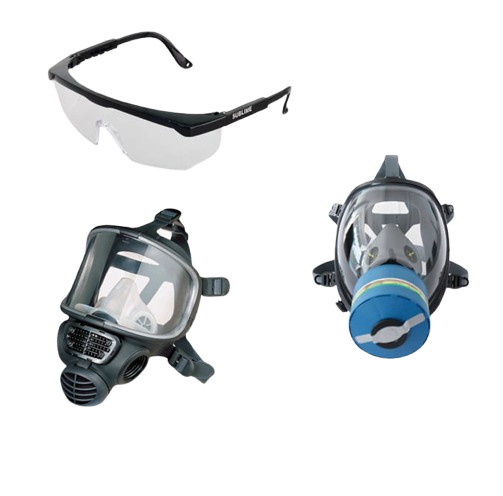
🥽 7. Safety Goggles & Face Shields – Vision Is Priceless
Eyes are extremely sensitive and can be damaged by even minor particles or chemical splashes.
- Protect from: Dust, debris, sparks, UV radiation, and liquid splashes
- Types:
- Splash-proof goggles (for chemical handling)
- Impact-resistant goggles (for construction/demolition)
- Welding face shields (for full facial protection)
- Importance: Prevents temporary or permanent vision loss from projectiles or exposure
Tip: Anti-fog, scratch-resistant lenses improve usability in tough conditions.
⚠️ Why Safety Equipment Is Not Optional
Using safety gear isn’t just a rule—it’s a life-saving practice. Here’s why it matters:
- Reduces accidents and injuries significantly
- Lowers downtime and healthcare costs for employers
- Improves productivity and morale—workers feel protected and confident
- Meets legal & compliance standards, avoiding penalties and shutdowns
- Sets a culture of safety, essential for long-term business success
✅ Final Word: Safety Is Everyone’s Responsibility
Field jobs are inherently risky, but with the right safety equipment, most injuries are entirely preventable. Every worker deserves to return home safe after their shift. Investing in quality PPE is not an expense—it’s a commitment to health, safety, and professional excellence.
Equip your team. Protect your future.
